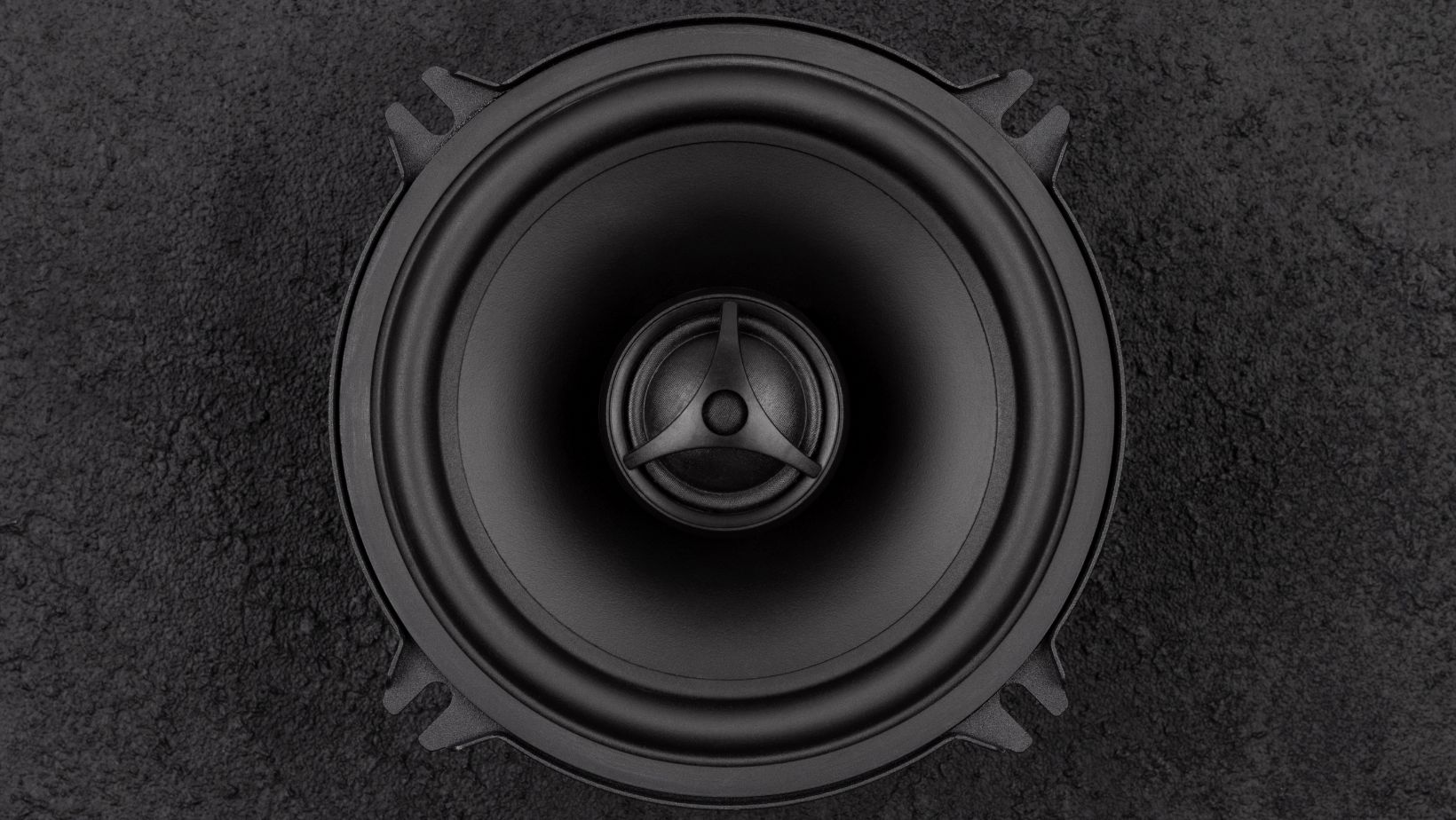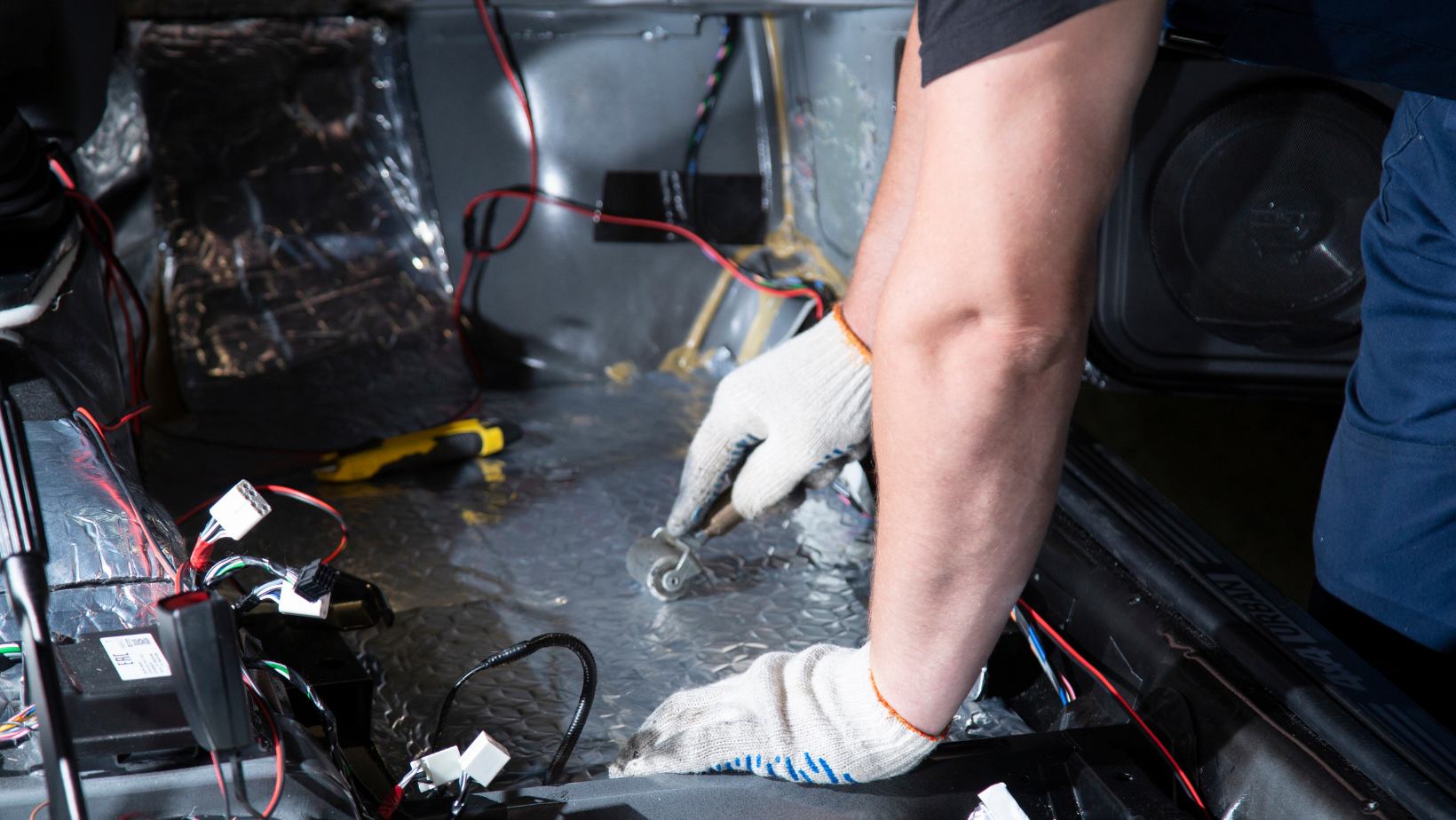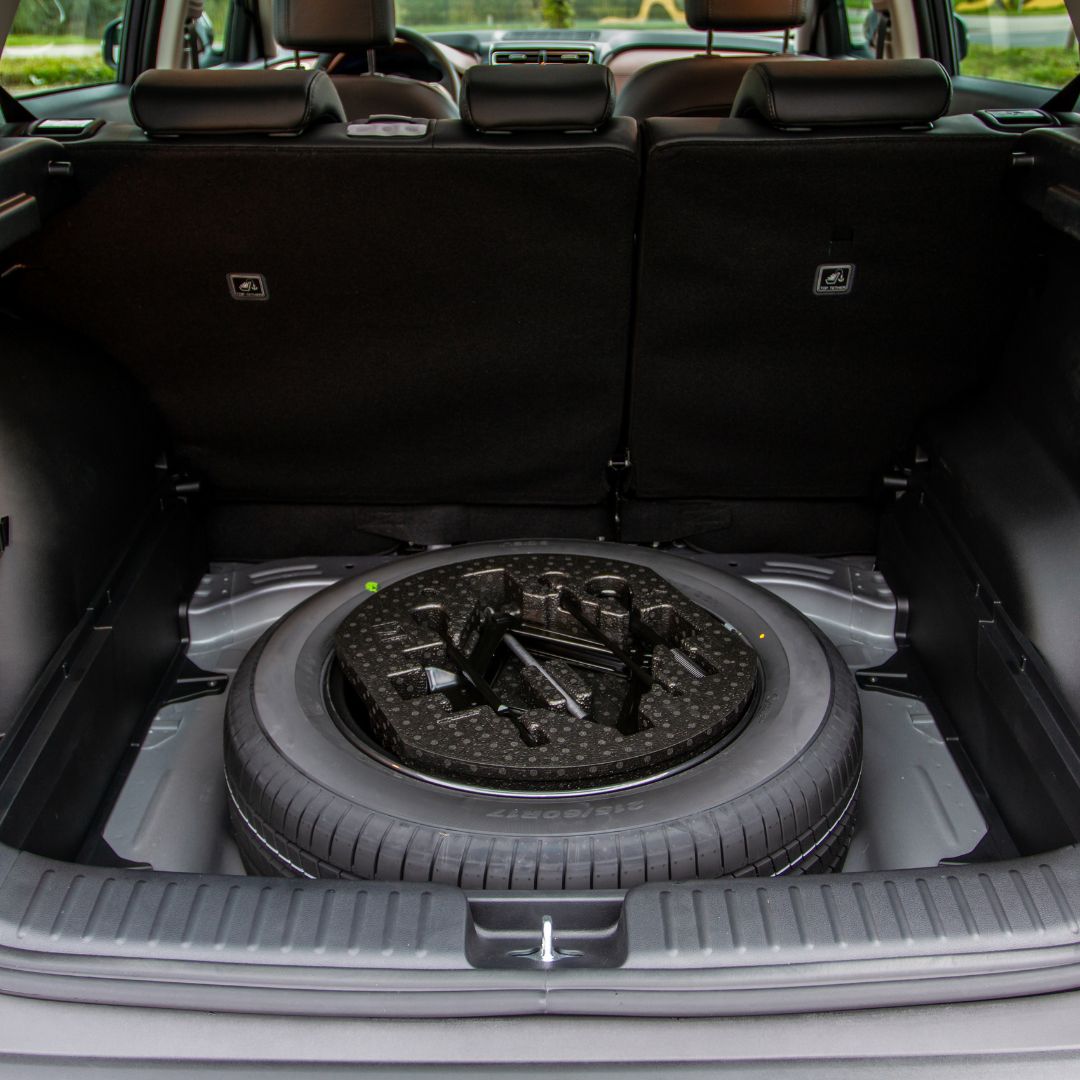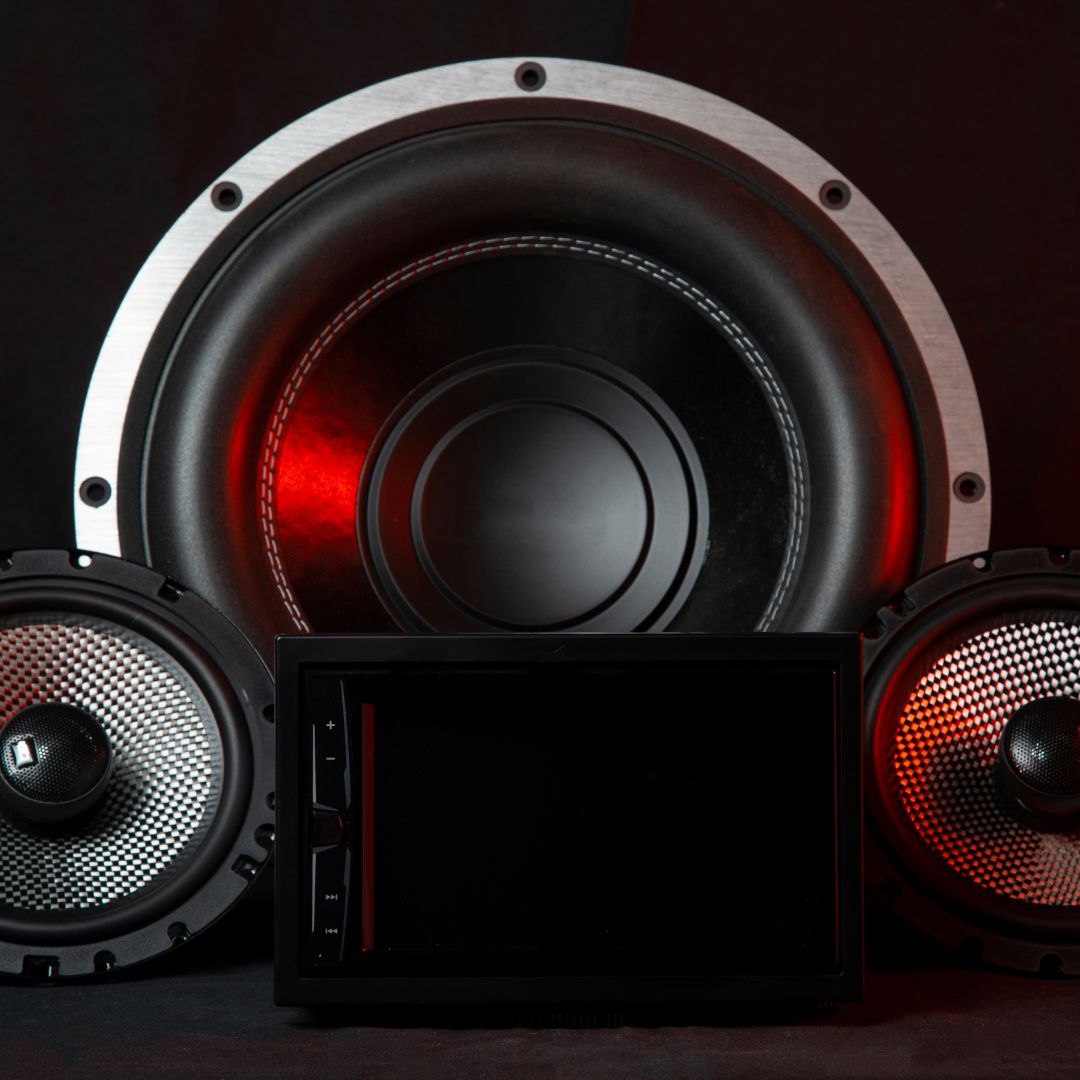How to Choose the Right Car Subwoofer : A Step-by-Step Guide
Contents
- 1 How to Choose the Right Car Subwoofer : A Step-by-Step Guide
When it comes to upgrading your car’s audio system, a car subwoofer can be a game-changer. These devices are designed to deliver deep, powerful bass, enhancing your overall listening experience. However, how to choose the right car subwoofer? choosing the best car subwoofer requires some careful consideration, as the market is flooded with various options. In this comprehensive guide, we’ll walk you through the step-by-step process of selecting and installing the perfect car subwoofer to take your car audio to the next level.How to choose the right car subwoofer? Here are the steps to follow before you make your purchase:
What is a Car Subwoofer?
Let’s start with the basics. A car subwoofer is a specialized speaker designed to reproduce low-frequency audio signals, particularly bass. These subwoofers are responsible for adding depth and dimension to your music by handling the lower end of the audio spectrum. Whether you enjoy heart-thumping beats or want a well-rounded audio experience, the right car subwoofer is key to achieving your desired sound.
Subwoofer Type
The first step in choosing the right car subwoofer is determining the type that suits your needs. There are two common types to consider:
Component Subwoofers
Component subwoofers are standalone units designed for users who want to build a custom audio system. They offer flexibility and customization options but require additional components like an amplifier and enclosure to function optimally. These are ideal for audiophiles looking to fine-tune every aspect of their audio setup.
Pre-Built Subwoofers
Pre-built subwoofers come pre-mounted in an enclosure, making installation easier. They are a convenient, plug-and-play solution, perfect for those who want an effective upgrade without the complexities of custom system building. Pre-built subwoofers offer simplicity and excellent performance for those who prefer a hassle-free installation.
Customizing a Subwoofer or Pre-Built
Once you’ve decided on the subwoofer type, it’s crucial to consider whether you want to customize your audio system or opt for a pre-built solution.
Customizing a Subwoofer
Customization offers the freedom to fine-tune every aspect of your audio system. It allows you to select each component separately, such as the subwoofer, amplifier, and enclosure, to create a system that perfectly suits your audio preferences. However, this route requires a deeper understanding of car audio systems and can be time-consuming.
Pre-Built Subwoofer
Pre-built subwoofers come ready to install, often in an enclosure designed for optimal performance. They are convenient and save time, making them a popular choice for those who want a quick and effective upgrade without the hassle of selecting individual components. While pre-built options may have some limitations regarding customization, they are designed for ease of use.
Subwoofer Size
Choosing the right subwoofer size is crucial. Generally, larger subwoofers produce deeper bass. Consider the available space in your car when deciding between various sizes, which typically range from 8 to 15 inches.
8-inch Subwoofers:
- Suitable for compact cars with limited space, ideal for adding a touch of bass to your existing audio system.
10-inch Subwoofers:
- Versatile and suitable for most vehicles, offering a balance between bass depth and space efficiency.
12-inch Subwoofers:
Known for their power and ability to reproduce deep bass, these are popular choices for many car audio enthusiasts.
15-inch Subwoofers:
- Designed for those who crave earth-shaking bass and have ample space available in their vehicle.
Choosing the right size isn’t just about power and bass depth; it’s also about ensuring it fits comfortably within your car’s available space.
Consider Power Handling and Sensitivity
Two important specifications to consider are power handling and sensitivity:
Power Handling
Power handling indicates how much power a subwoofer can handle without distortion or damage. To ensure optimal performance and prevent damage to the subwoofer, make sure that the subwoofer’s power handling capability matches or exceeds the power output of your amplifier. A well-matched pairing of subwoofer and amplifier ensures a seamless listening experience.
Sensitivity
Sensitivity is a measure of how efficiently a subwoofer can convert power into sound. A higher sensitivity rating means the subwoofer can produce more sound from a given amount of power. This efficiency can be particularly important if you’re using a lower-powered amplifier or want to minimize power consumption.
Finding the right balance between power handling and sensitivity is key to achieving the desired audio quality in your car.
Impedance
Impedance, measured in ohms, is a critical factor in determining how a subwoofer interacts with your amplifier. Matching the impedance of your subwoofer to that of your amplifier is essential for efficient power transfer and optimal sound quality. Most car subwoofers come in 4-ohm and 2-ohm varieties, so it’s vital to select the one that’s compatible with your amplifier’s specifications.
Enclosure Design
The enclosure, also known as the box, significantly influences the performance of your subwoofer. There are several enclosure types, each offering distinct sound characteristics:
Sealed Enclosures: These provide tight, controlled bass and are ideal for accurate music reproduction. Sealed enclosures are relatively compact and suitable for a variety of musical genres.
Ported Enclosures: Also known as vented enclosures, they are designed to enhance bass output and efficiency. Ported enclosures are perfect for those seeking more pronounced and resonant bass.
Bandpass Enclosures: These enclosures are known for their impressive sound output in a narrow frequency range. They can provide powerful bass, but they might not be suitable for all music genres.
Choosing the right enclosure design depends on your musical preferences and the available space in your vehicle. Keep in mind that the enclosure type should be compatible with your selected subwoofer and amplifier.
Single or Dual-Magnet Subwoofer
Subwoofers come with either a single magnet or dual magnets. The choice between these options can impact the subwoofer’s efficiency, power handling, and bass output. Consider your vehicle’s constraints and audio goals when deciding between the two:
Single-Magnet Subwoofers: These are common and provide reliable performance. They are generally more compact and can be a good choice if you have limited space in your car.
Dual-Magnet Subwoofers: Subwoofers with dual magnets can enhance efficiency and power handling. They are often used for high-power applications and can deliver deeper and more impactful bass. However, they may require more space in your vehicle.
Frequency Range
The frequency range of a subwoofer is a critical factor in determining the depth and clarity of the bass it can produce. The majority of subwoofers offer a frequency range that spans from around 20Hz to 200Hz, covering a wide spectrum of bass frequencies. However, specialty subwoofers can reach even lower frequencies, providing ultra-deep bass for audiophiles who crave the most immersive listening experience.
When selecting a subwoofer, consider the music genres you listen to most frequently and choose a subwoofer with a frequency range that suits your preferences.
Available Space in Car
Before finalizing your choice, take into account the available space in your car. Ensure that the subwoofer and enclosure fit comfortably without compromising passenger comfort or cargo capacity. Compact cars may benefit from smaller subwoofers, while larger vehicles can accommodate larger options.
How to Install a Subwoofer
Once you’ve chosen the right car subwoofer for your needs and vehicle, it’s time to install it. While the installation process can vary based on your specific subwoofer and vehicle, here are some general steps to guide you:
Gather Your Tools: You’ll need a set of basic tools, including screwdrivers, wire strippers, crimp connectors, and a drill, to complete the installation.
Locate the Installation Spot: Choose the location in your vehicle where you want to install the subwoofer. This should be a secure and easily accessible spot.
Mount the Subwoofer: Secure the subwoofer in its designated location, ensuring it’s firmly in place to prevent vibrations and movement while driving.
Wire the Subwoofer: Connect the subwoofer to your amplifier using the appropriate wiring. Be sure to follow the manufacturer’s instructions and ensure all connections are secure.
Tune the System: Adjust the settings on your amplifier to achieve the desired sound quality. Pay attention to gain, crossover frequency, and phase adjustments.
Test the System: Before closing up, test your subwoofer to ensure it’s working correctly. Play a variety of music to gauge its performance.
Secure and Conceal Wiring: Hide and secure wiring to prevent clutter and potential damage. Make sure wiring is out of the way of moving parts and does not interfere with your car’s safety systems.
Close Up: Reassemble any removed parts of your car interior and secure the subwoofer installation. Ensure that it’s firmly in place and that all connections are secure.
With the subwoofer successfully installed, you can now enjoy enhanced bass and a more immersive audio experience during your drives.
In conclusion, selecting the right car subwoofer is a multi-step process that involves considering subwoofer type, size, power handling, sensitivity, impedance, enclosure design, magnet configuration, frequency range, and the available space in your vehicle. By following these steps and taking your personal audio preferences into account, you’ll be well on your way to enjoying a rich and powerful audio experience on the road that perfectly suits your style and needs. Whether you’re a casual listener or a die-hard audiophile, the right car subwoofer can take your music to the next level, and with the installation process covered, you’re ready to hit the road with your newfound audio bliss.
We hope you enjoyed our guide on how to choose the right car subwoofer .
If you are looking for a subwoofer to suit your car , check out our guides. We tested and reviewed subwoofers from all categories 8 inch active , 8 inch passive , 10 inch active box , 10 inch active slim , 10 inch passive , 12 inch and 15 inch .




